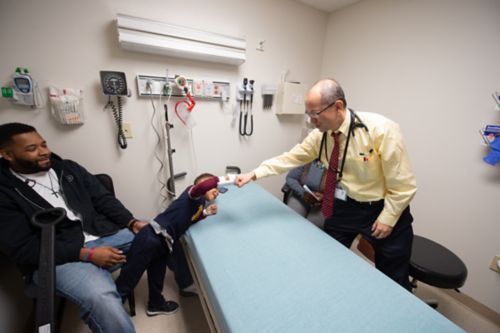Menu
Close
Back
Welcome to
Together is a new resource for anyone affected by pediatric cancer - patients and their parents, family members, and friends.
Learn MoreFamilies dealing with serious childhood illnesses often develop close bonds with members of their care teams. And very often members of the care team develop relationships with their patients.
Caring for these children and families involves tending to daily needs for extended periods of time. These bonds can be helpful in several ways. Good relationships between families and care team members can:
But healthy boundaries are important to protect both families and providers.

Care team members may provide support by giving a hug, sharing personal stories, and asking the patient about personal details to develop trust.
Families and care team members often develop connected relationships. For care team members to do their jobs well, they need to show compassion, empathy, and respect.
Getting to know patients and families is a natural part of the process. At the same time, boundaries are important. Children and their families must rely on the care team to make critical decisions about treatment and care. These decisions can be complicated.
Maintaining professional boundaries makes sure:
Different care team members may have different views on their own professional boundaries. Some might be more formal with their patients. Others may have a more open personal style. The same goes for patients and families.
Care team members may provide support and connect with families by:
Sometimes children may need extra attention during treatment to keep their spirits up. This is especially true for patients who have extended hospital stays away from friends, school, and other sources of comfort.

Good relationships between families and care team members help build trust and encourage partnership in decision making.
It is always the care team member’s responsibility to maintain boundaries. It is not your responsibility. Certain inappropriate behaviors from team members are clear:
Other boundaries may not be as clear. Some families may feel uncomfortable if care team members share too much personal information or ask personal questions. Patients and family members should set their own boundaries and express when they are not comfortable with a situation. If a care team member may have crossed the line into inappropriate behavior, families can alert another member of the care team or seek help from a patient advocate.
Set your own boundaries and express when they are not comfortable with a situation. If a care team member may have crossed the line into inappropriate behavior, alert another member of the care team or seek help from a patient advocate.
Technology and social media have created new avenues for care teams to communicate with patients and families. However, the ease of sites such as Facebook, X, YouTube, and CaringBridge come with risks. Potential risks include:
Care team members are generally advised not to “friend” patients or patient families on social media. They are also advised not to initiate an invitation to become connected on social media.
This helps providers maintain the boundaries and protect patient privacy. Families should not feel hurt if their invitations are not accepted or if care team members seem more distant in certain settings. When the boundaries are unclear, honest communication is important to make sure everyone is comfortable.
—
Reviewed: August 2022